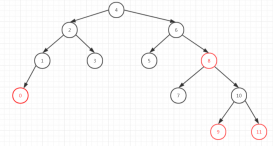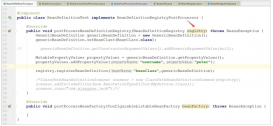优化selector
selector的创建过程
在剖析selector轮询之前, 我们先讲解一下selector的创建过程
回顾之前的小节, 在创建NioEventLoop中初始化了唯一绑定的selector:
|
1
2
3
4
5
6
7
8
|
NioEventLoop(NioEventLoopGroup parent, Executor executor, SelectorProvider selectorProvider, SelectStrategy strategy, RejectedExecutionHandler rejectedExecutionHandler) { super(parent, executor, false, DEFAULT_MAX_PENDING_TASKS, rejectedExecutionHandler); //代码省略 provider = selectorProvider; selector = openSelector(); selectStrategy = strategy;} |
这里 selector = openSelector() 初始化了selector
我们跟到openSelector()中:
|
1
2
3
4
5
6
7
8
9
10
11
12
13
14
15
16
17
18
19
20
21
22
23
24
25
26
27
28
29
30
31
32
33
34
35
36
37
38
39
40
41
42
43
44
45
46
47
48
49
50
51
52
53
54
55
56
57
58
59
60
61
62
63
64
65
66
67
68
69
70
71
72
73
74
75
76
|
private Selector openSelector() { final Selector selector; try { //调用jdk底层的api selector = provider.openSelector(); } catch (IOException e) { throw new ChannelException("failed to open a new selector", e); } //判断是否需要关闭优化(默认false, 也就是默认需要优化) if (DISABLE_KEYSET_OPTIMIZATION) { return selector; } //用这个数据结构替换原生的SelectionKeySet final SelectedSelectionKeySet selectedKeySet = new SelectedSelectionKeySet(); Object maybeSelectorImplClass = AccessController.doPrivileged(new PrivilegedAction<Object>() { @Override public Object run() { try { //通过反射拿到sun.nio.ch.SelectorImpl这个类的class对象 return Class.forName("sun.nio.ch.SelectorImpl", false, PlatformDependent.getSystemClassLoader()); } catch (ClassNotFoundException e) { return e; } catch (SecurityException e) { return e; } } }); //判断拿到的是不是class对象并且是不是Selector的实现类 if (!(maybeSelectorImplClass instanceof Class) ||!((Class<?>) maybeSelectorImplClass).isAssignableFrom(selector.getClass())) { if (maybeSelectorImplClass instanceof Exception) { Exception e = (Exception) maybeSelectorImplClass; logger.trace("failed to instrument a special java.util.Set into: {}", selector, e); } //如果不是他的实现, 就直接返回原生select return selector; } //如果是它的实现, 就拿到其class对象 final Class<?> selectorImplClass = (Class<?>) maybeSelectorImplClass; Object maybeException = AccessController.doPrivileged(new PrivilegedAction<Object>() { @Override public Object run() { try { //通过反射拿到selectedKeys和publicSelectedKeys两个属性, 默认这两个属性底层都是hashSet方式实现的 Field selectedKeysField = selectorImplClass.getDeclaredField("selectedKeys"); Field publicSelectedKeysField = selectorImplClass.getDeclaredField("publicSelectedKeys"); //设置成可修改的 selectedKeysField.setAccessible(true); publicSelectedKeysField.setAccessible(true); //将selector的这两个属性替换成Netty的selectedKeySet selectedKeysField.set(selector, selectedKeySet); publicSelectedKeysField.set(selector, selectedKeySet); return null; } catch (NoSuchFieldException e) { return e; } catch (IllegalAccessException e) { return e; } catch (RuntimeException e) { if ("java.lang.reflect.InaccessibleObjectException".equals(e.getClass().getName())) { return e; } else { throw e; } } } }); if (maybeException instanceof Exception) { selectedKeys = null; Exception e = (Exception) maybeException; logger.trace("failed to instrument a special java.util.Set into: {}", selector, e); } else { //将优化后的keySet保存成NioEventLoop的成员变量 selectedKeys = selectedKeySet; logger.trace("instrumented a special java.util.Set into: {}", selector); } return selector;} |
代码剖析
这里代码比较长, 我们一点一点的剖析:
首先 selector = provider.openSelector() 这里创建了jdk底层的selector
|
1
2
3
|
if (DISABLE_KEYSET_OPTIMIZATION) { return selector;} |
这里判断了是否关闭优化功能, 默认是false, 也就是需要优化, 这里的意思就是netty需要对jdk原生的selector进行了优化, 我们知道selector在select()操作时候, 会通过selector.selectedKeys()操作返回一个Set<SelectionKey>, 这个是Set类型, netty对这个set进行了处理, 使用SelectedSelectionKeySet的数据结构进行替换, 当在select()操作时将key存入一个SelectedSelectionKeySet的数据结构中
|
1
|
final SelectedSelectionKeySet selectedKeySet = new SelectedSelectionKeySet(); |
这里一步创建了这个优化后的数据结构
简单跟一下SelectedSelectctionKeySet这个类的构造方法:
|
1
2
3
4
|
SelectedSelectionKeySet() { keysA = new SelectionKey[1024]; keysB = keysA.clone();} |
初始化了两个属性keysA和keysB, 说明这类其实底层是通过数组实现的, 通过操作数组下标会有更高的效率
这个类的的flip()方法, 则返SelectionKey[]数组
|
1
2
3
4
5
6
7
8
9
10
11
12
13
|
SelectionKey[] flip() { if (isA) { isA = false; keysA[keysASize] = null; keysBSize = 0; return keysA; } else { isA = true; keysB[keysBSize] = null; keysASize = 0; return keysB; }} |
再看下其他方法:
|
1
2
3
4
5
6
7
8
9
10
11
12
|
@Overridepublic boolean remove(Object o) { return false;}@Overridepublic boolean contains(Object o) { return false;}@Overridepublic Iterator<SelectionKey> iterator() { throw new UnsupportedOperationException();} |
我们看到remove()方法, contains()方法都返回了false, 说明其不支持删除方法和包含方法, iterator()方法则直接抛出异常, 说明其不支持迭代器操作
回到openSelector()中:
再往下看, 这里通过 Class.forName("sun.nio.ch.SelectorImpl", false, PlatformDependent.getSystemClassLoader()) 创建了一个SelectorImpl的class对象
if(!(maybeSelectorImplClass instanceof Class) ||!((Class<?>) maybeSelectorImplClass).isAssignableFrom(selector.getClass()))
这里判断拿到的对象是否为class对象并且是否为Selector的实现类, 如果不是, 则直接返回jdk的selector
如果是, 就继续转化成class对象
然后就做了真正的替换操作:
|
1
2
3
4
5
6
7
8
9
|
//通过反射拿到selectedKeys和publicSelectedKeys两个属性, 默认这两个属性底层都是hashSet方式实现的Field selectedKeysField = selectorImplClass.getDeclaredField("selectedKeys");Field publicSelectedKeysField = selectorImplClass.getDeclaredField("publicSelectedKeys");//设置成可修改的selectedKeysField.setAccessible(true);publicSelectedKeysField.setAccessible(true);//将selector的这两个属性替换成Netty的selectedKeySetselectedKeysField.set(selector, selectedKeySet);publicSelectedKeysField.set(selector, selectedKeySet); |
通过注释我们不难看出, 这里将新创建selectedKeySet替换了selector对象中的selectedKeysField, 和selectedKeysField两个属性
最后通过 selectedKeys = selectedKeySet 将优化的数据结构selectedKeySet保存在NioEventLoop的成员变量中
最后返回优化后的selector
这样, selector在select()操作的过程中, 如果有就绪事件则会将返回的key存放在selectedKeySet所对应的数组中
以上就是Netty分布式NioEventLoop优化selector源码解析的详细内容,更多关于Netty分布式NioEventLoop优化selector的资料请关注服务器之家其它相关文章!
原文链接:https://www.cnblogs.com/xiangnan6122/p/10203116.html















